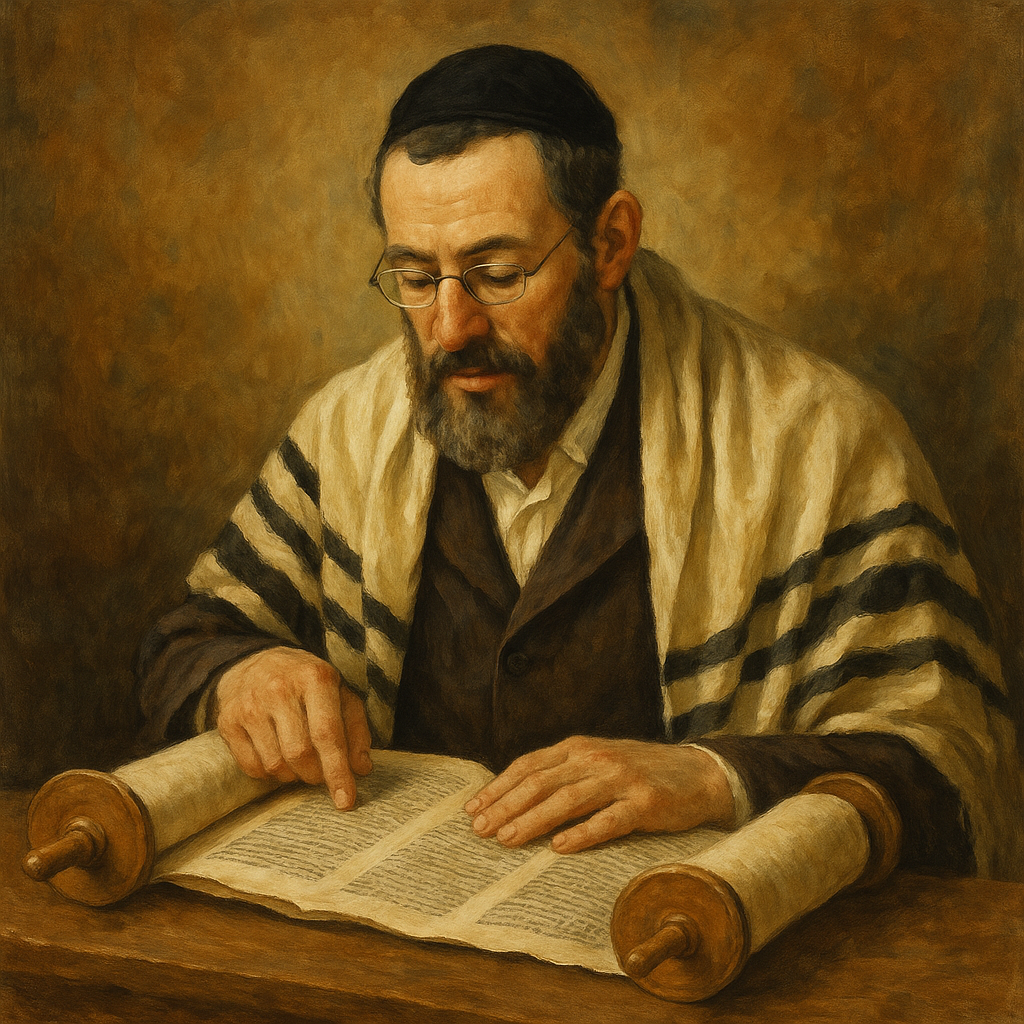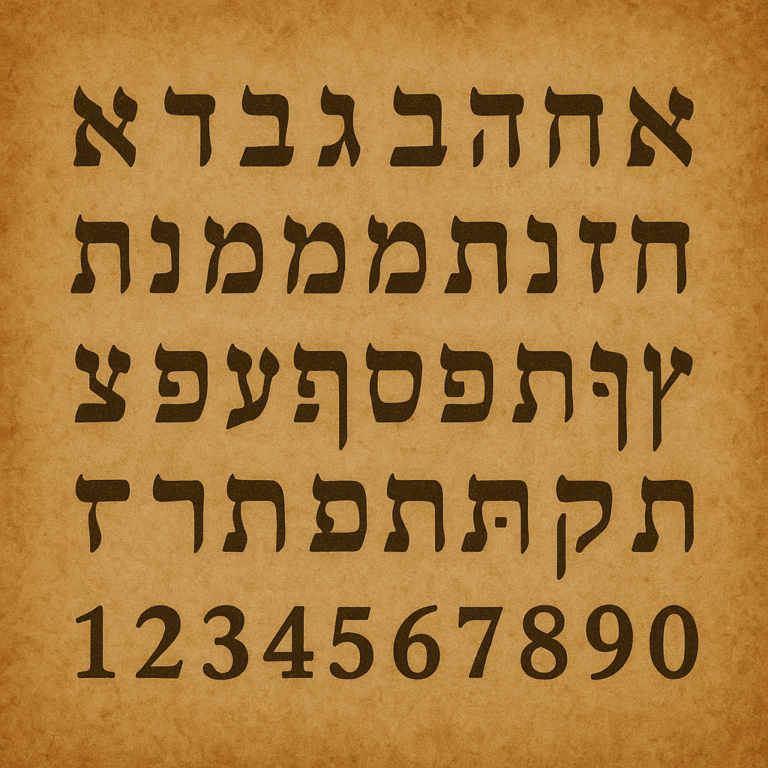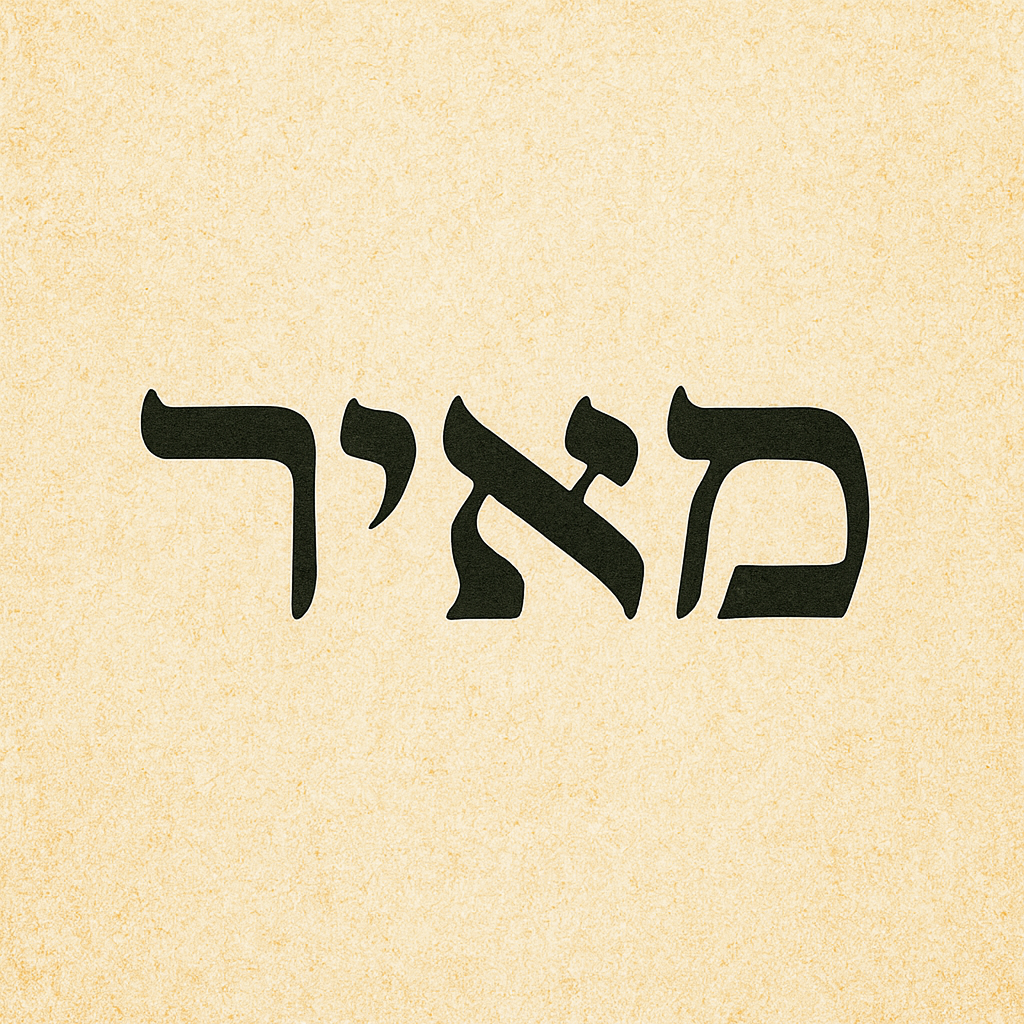Home » About Rabbi Meir » Torah Teachings & Wisdom » The 300 Fox Fables of Rabbi Meir Baal Haness
The 300 Fox
Fables of Rabbi
Meir Baal Haness
Discover ancient wisdom preserved through three surviving mashalim (parables) from a treasury of three hundred that were lost.
The Gemara in Sanhedrin 38b teaches us something remarkable about Rabbi Meir Baal Haness. It states: “When Rabbi Meir died, the composers of fox fables ceased.” This powerful statement reveals that Rabbi Meir created three hundred fox fables to teach Torah wisdom through mashalim (parables). Today, only three of these precious Jewish parables survive from his original collection, preserved through the dedication of generations of Torah scholars who recognized their eternal value. The Gemara’s statement tells us that no other sage could match Rabbi Meir’s unique gift – after his passing, this special art form disappeared from the world.
The fox fables of Rabbi Meir Baal Haness were not simple children’s tales. They were sophisticated rabbinic parables that made complex Torah concepts accessible to every Jewish neshamah (soul). Through the character of the fox, Rabbi Meir taught lessons about emunah (faith), chochmah (wisdom), and survival that still speak to us today
The Lost Treasury of Jewish Parables
Rabbi Meir’s collection of three hundred fox fables represents one of the greatest losses in Jewish literature. Each of these rabbinic parables was carefully crafted to illuminate Torah wisdom through narrative. The Chachamim (Sages) tell us that with Rabbi Meir’s passing, this unique form of teaching disappeared from the world.
What made these rabbinic parables so special? Rabbi Meir understood that not everyone learns through pilpul (sharp analysis). Some need stories to grasp deep truths. His aggadah stories, particularly the fox fables, bridged this gap. Like the famous hedgehog and fox concept – while the hedgehog knows one big thing, the fox knows many things – Rabbi Meir’s fox character embodied the cleverness needed for Jewish survival in galut (exile).
The tradition of creating midrash stories existed before Rabbi Meir. But he elevated it to an art form. His aggadah stories used consistent characters and themes. The fox appeared repeatedly, sometimes representing Am Yisrael (the Jewish people), sometimes the yetzer hara (evil inclination), and sometimes Divine wisdom in disguise. This consistency helped talmidim (students) recognize patterns and extract deeper meanings.
Why Fox Fables? Understanding the Talmud's Tribute to Rabbi Meir
The Talmud’s statement about Rabbi Meir appears in Sanhedrin 38b, within a discussion about creation and faith. This placement reveals that these Midrash stories served a specific purpose – answering philosophical challenges through narrative rather than argument. When logic alone could not convince, a well-told mashal could open hearts and minds.
The passage tells us something crucial. It does not say “composers of parables ceased” but specifically “composers of fox fables ceased.” This precise language suggests Rabbi Meir’s fox stories had a unique quality. Other Tannaim (Mishnaic sages) told parables, but none matched his particular genius with fox narratives. The fox, small and clever, surviving by intelligence rather than strength, perfectly represented the desired role.
According to Rashi’s commentary, the three surviving fables are linked to specific verses from the Tanach (Hebrew Bible): Ezekiel 18:2, Proverbs 11:8, and Leviticus 19:36. These rabbinic parables were composed to shed light on these verses through narrative, and—as we will explore below—each mashal reveals multiple layers of meaning embedded within the biblical text.
The power of reservation
Every donation to Rabbi Meir Baal Haness Charities helps preserve the ancient teachings of Torah. Your tzedakah (charity) ensures that Torah scholars can continue studying and teaching the full breadth of Rabbi Meir’s wisdom to future generations.
The Three Surviving Fox Fables from Rabbi Meir
The Wolf and Ancestral Sin
The first surviving mashal illustrates the pasuk (verse) “The fathers have eaten sour grapes, and the children’s teeth are set on edge” (Ezekiel 18:2). Rashi, in his commentary on this pasuk as it appears in Sanhedrin 38b, explains which of Rabbi Meir’s mashalim corresponds to this verse: A fox convinces a wolf to enter a Jewish home on Erev Shabbos (Sabbath eve), promising him a share in the seudah (festive meal). The wolf is discovered and beaten. When he complains, the fox explains he was beaten for his father’s aveiros (sins), not his own.
The wolf knows this makes no sense – why should he suffer for what his father did? This mashal teaches us that each person is judged for their own actions, not their parents’ mistakes. The Torah rejects the idea that children must pay for their parents’ sins. Each of us stands before Hashem responsible for our own choices.
The Well and Divine Justice
The second mashal continues the story, illustrating “The righteous is delivered from trouble, and the wicked comes in his stead” (Proverbs 11:8). After the beating, the fox leads the wolf to a well with two buckets on a pulley. The fox jumps into one bucket, descending while raising the other. He calls to the wolf about finding Gan Eden (paradise) below.
The greedy wolf jumps into the raised bucket. As he descends, the fox rises to safety. This mashal shows how those who try to harm others often fall into their own traps. The fox used his wisdom to escape, while the wolf’s greed led to his downfall. This teaches about middah k’neged middah (measure for measure) – our actions create their own consequences.
Just Balances
The same well story also illustrates “Just balances, just weights” (Leviticus 19:36). The two buckets represent scales of justice – perfectly balanced, where one’s rise requires another’s descent. The fox understands this principle of justice, while the wolf remains ignorant.
This mashal teaches that the world operates on fair principles – like balanced scales. The fox succeeded because he understood how things work. The wolf failed because he didn’t think things through. Just as the buckets must balance, we must be honest and fair in all our dealings. Understanding Torah wisdom helps us navigate life successfully.
Other Beloved Jewish Fox Parables
While only three of Rabbi Meir’s original fox fables survive, other beautiful Jewish parables featuring foxes exist in our tradition. These Talmud stories, though not from Rabbi Meir’s collection of three hundred, carry similar wisdom and continue the tradition of teaching through narrative
Rabbi Akiva's Fox and Fish
One of the most famous fox parables comes from Rabbi Akiva, Rabbi Meir’s teacher. In Berachot 61b, Rabbi Akiva tells of a fox walking along a riverbank who sees fish swimming frantically to escape fishermen’s nets. The fox invites them onto dry land for safety. The fish respond: “If we are afraid in our living waters, how much more so in our place of death!” Unlike the hedgehog and fox philosophy where one knows many things, the fish knows only one truth – it needs water to survive.
This mashal teaches that just as fish cannot survive without water, Klal Yisrael (the Jewish people) cannot truly live without Torah. Even in times of danger, we must remain immersed in Torah study, for it is our source of life.
The Fox in the Vineyard
Another powerful fox story appears in Koheles Rabbah (Ecclesiastes Rabbah 5:20). A hungry fox sees a beautiful vineyard surrounded by a fence with only a tiny hole. He fasts three days until thin enough to enter. After eating his fill and becoming fat, he must fast again to escape. Looking back, he says: “Vineyard, how beautiful you are! But what benefit have I from you? As one enters, so one leaves.”
This teaches about the vanity of worldly pleasures. We enter this world with nothing and leave with nothing – only our Torah and mitzvos (commandments) accompany our neshamah to Olam Haba (the World to Come).
Why Rabbinic Stories Matter for Jewish Education
These ancient Jewish parables serve purposes that other teaching methods cannot match. When we study halachah (Jewish law), we engage our intellect. When we hear mashalim, we engage our heart and imagination. Rabbi Meir understood this distinction.
Modern research confirms what Rabbi Meir knew intuitively. Stories create stronger memories than facts alone. When talmidim learn through narrative, they remember not just the lesson but the entire context.
Furthermore, these Midrash stories provide safe spaces to explore difficult topics. Through the fox’s actions, we examine consequences without personal risk. Topics like death, suffering, and justice become easier to discuss through the protective distance of the story.
The study of aggadah stories also builds critical thinking skills. Each mashal requires interpretation. Students must ask: Why a fox? Why these specific details? What do the symbols mean? This training in symbolic thinking prepares minds for all areas of limud Torah (Torah study).
The Tradition of Mashal Stories in Judaism
The use of mashalim in Judaism extends back to the Nevi’im (prophets). Nathan’s parable to King David, Isaiah’s vineyard song, and Ezekiel’s allegories all use story to convey the word of God. Rabbi Meir inherited and perfected this mesorah (tradition).
What distinguishes Rabbi Meir’s approach? Unlike Aesop’s fables teaching universal morals, Rabbi Meir’s stories encode specifically Jewish wisdom. They assume knowledge of Torah and Jewish experience. Like the hedgehog and fox dichotomy, they operate on multiple levels – p’shat (simple), remez (hint), drash (interpretation), and sod (secret).
The phrase “composers of fables ceased” suggests Rabbi Meir had talmidim who tried continuing his work. But none could match his spiritual level. The art of creating such multilayered narratives at his level was lost with his passing. This makes our responsibility to preserve the surviving stories even greater.
Continue the Legacy
Your Role in Rabbi Meir's Eternal Promise
The survival of even three fox fables from Rabbi Meir’s original three hundred stands as both a gift and a responsibility. These rabbinic parables carry wisdom that has guided Am Yisrael through centuries of challenges. Rabbi Meir Baal Haness Charities helps preserve this mesorah by supporting Torah scholars who study these ancient texts, enabling teachers to share these lessons effectively, and funding publishers who create seforim that make Rabbi Meir’s wisdom accessible to new generations. Through the charity, scholars can dedicate time to delve deep into Torah study without interruption, ensuring that future generations will know how to read, understand, and learn from these Talmudic stories, keeping our mesorah alive and strong.
Rabbi Meir Baal Haness promised to be a meilitz yosher (advocate) in Heaven for those who give tzedakah to the poor of Israel in his memory. When you support these educational programs that keep his teachings alive, you create merit both through tzedakah and through enabling Torah learning. Your donation joins you to the sacred work of preserving and transmitting this irreplaceable heritage. In the zechus of Rabbi Meir Baal Haness, may you be blessed with understanding to grasp life’s mysteries, strength to overcome life’s challenges, and the joy of knowing you have helped preserve eternal Torah wisdom. May the lessons of the fox fables illuminate your path as they have illuminated countless Jewish neshamos throughout our history. Join this sacred mission today and become a partner in preserving Rabbi Meir’s eternal teachings.
FAQ
What makes Rabbi Meir's fox fables different from other animal stories?
These midrash stories are unique because they encode specifically Torah wisdom rather than general ethics. Each mashal operates on multiple levels – the simple meaning, the allegory about Jewish life, and deeper spiritual teachings. The fox character consistently represents aspects of the Jewish experience, making these rabbinic parables particularly relevant to our people’s journey through history.
Why were most of the three hundred fables lost?
The Gemara does not explain why only three survived. The oral tradition meant stories were passed from rebbe to talmid orally. Perhaps these three contained the most essential lessons, or were most frequently taught. Their loss reminds us how fragile our traditions can be without active preservation efforts.
How can ancient stories be relevant today?
These Jewish parables address eternal challenges – maintaining emunah during troubles, resisting the yetzer hara, and finding meaning in this temporary world. While the world has changed, these core challenges remain. The fox’s cleverness in navigating danger mirrors how we must navigate modern challenges with wisdom
Can children understand these complex mashalim?
Yes! Rabbi Meir designed these mashal stories to work at different levels. Children can enjoy the surface story of a clever fox. As they grow in their learning, they discover deeper meanings. This multilayered approach makes the fables perfect for family learning, where each person can engage at their own level.
How does supporting Rabbi Meir Baal Haness Charities help preserve these teachings?
Your tzedakah (charity) directly supports Torah scholars who study these texts and teachers who teach them. This ensures the surviving fox fables remain part of living Jewish tradition rather than forgotten museum pieces. Every donation helps maintain the chain of transmission from Rabbi Meir to today’s students.
Keep the Light of Torah Learning Alive
The three surviving fox fables of Rabbi Meir Baal Haness represent treasures we cannot afford to lose. Your support ensures these profound teachings continue illuminating Jewish minds and hearts.

 The Mishnah Editor | Rabbi Meir’s role in preserving the Oral Torah
The Mishnah Editor | Rabbi Meir’s role in preserving the Oral Torah  Three Parts Wisdom | Understanding Rabbi Meir’s teaching methodology
Three Parts Wisdom | Understanding Rabbi Meir’s teaching methodology Hidden Meanings: Gematria | The numerical mysteries in Rabbi Meir’s teachings
Hidden Meanings: Gematria | The numerical mysteries in Rabbi Meir’s teachings Hidden Meanings: Gematria | The numerical mysteries in Rabbi Meir’s teachings
Hidden Meanings: Gematria | The numerical mysteries in Rabbi Meir’s teachings
